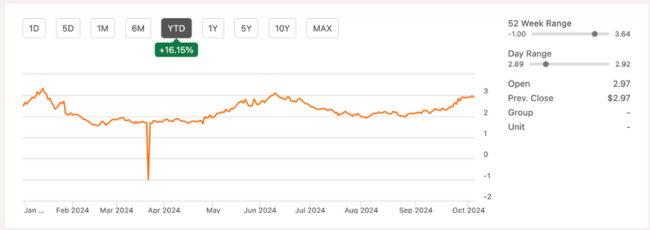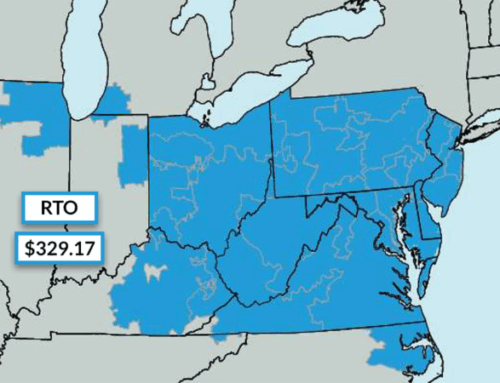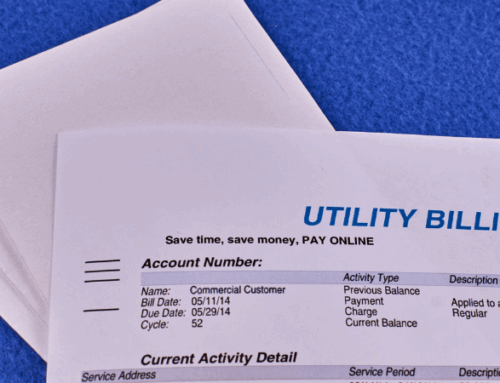As we move into 2025, energy prices will be at the center stage in economic discussions and consumer interests alike. With energy price market volatility, geopolitical events, and a global shift towards renewable energy, understanding the energy price forecast for 2025 is critical for planning your business energy costs next year. In this article, we explore the projected electricity and gas prices for the upcoming year, the factors driving these changes, and how businesses can navigate the complexities of the evolving energy landscape.
Looking Back At 2024: Price Trends & Market Shifts
Although previous years were marked by significant volatility due to supply and demand imbalances, 2024 has seen some stability in the energy markets. In our 2024 Energy Prices Forecast, we noted the impact of Russia’s invasion of Ukraine on global gas supplies, which caused substantial price spikes throughout Europe and beyond. However, increased energy production in 2024 led to the stabilization of prices, as evidenced by the natural gas price chart below:

In 2024, renewable energy continued to grow, with solar and wind energy setting new records for capacity and generation. In particular, solar is projected to meet a significant portion of the world’s energy demand, a trend that is expected to continue in 2025. However, as the global energy market shifts towards sustainability, the stability experienced in 2024 seems only temporary, setting the stage for more complex market dynamics in the coming year.
Factors Driving Energy Price Fluctuations In 2025: Electricity & Natural Gas
As we look ahead to energy prices in 2025, several key factors are expected to influence market trends. These include rising consumer demand, retiring fossil fuel power plants, increased capacity auction prices, natural gas production, geopolitical events, and energy policy. Let’s explore some of the key factors that will influence higher energy prices in 2025:
Electricity Demand and Capacity Price Increases
According to the IEA, global electricity demand is expected to grow by 4% in 2025, driven by economic recovery, increased need for electricity to power artificial intelligence, and expanding industrial activities. As noted in PJM’s recent capacity auction, capacity prices will rise nearly 10x for the 2025/2026 delivery year. These prices rose significantly due to growing demand, a lack of supply due to retiring power plants, and constraints on electric grid infrastructure. This will lead to higher costs for businesses in regions covered by PJM, such as those in Delaware, Illinois, Indiana, Kentucky, Maryland, Michigan, New Jersey, North Carolina, Ohio, Pennsylvania, Tennessee, Virginia, West Virginia, and the District of Columbia.
For a deeper understanding of how capacity prices affect electricity costs, read more in our article on the PJM Capacity Price Increase for 2025/2026.
Natural Gas Prices On The Rise
The U.S. natural gas price forecast for 2025 indicates a sharp increase, with Henry Hub futures projecting a rise from an overage of $2.22/mmBtu in 2024 to $3.20/mmBtu in 2025. This projected 44% increase is driven by several factors, including a growing demand for liquefied natural gas (LNG) exports from the U.S. and increased use of natural gas in power generation. In addition, natural gas production is threatened by potential energy policies that could place bans on fracking in certain regions throughout the U.S. Businesses should expect higher gas bills next year, particularly in regions that rely heavily on this resource.
For more information on natural gas price forecasts, check out our article on natural gas supply and demand.
Geopolitical and Regulatory Factors
Geopolitical risks will continue to play a significant role in energy price trends. Europe’s energy crisis, exacerbated by Russia’s conflict with Ukraine, led to a sharp rise in gas prices throughout 2024, and these issues will likely persist in 2025. In addition, regulatory changes aimed at reducing carbon emissions and promoting clean energy adoption may drive up costs for traditional fossil fuel energy sources such as coal and natural gas.
For more insights into how these factors are shaping energy markets, read our analysis on the global impact of European energy market volatility.
How Is Energy Price Forecasted?
Forecasting energy prices involves analyzing a range of factors, from supply and demand dynamics to geopolitical influences and market behavior. Energy price forecasts typically rely on both quantitative and qualitative methods. Quantitative models use historical data and trends to identify patterns, while qualitative analysis considers external influences like policy changes, weather conditions, and technological advancements.
Key elements that influence energy price forecasting include:
- Supply and demand fluctuations: Changes in demand due to economic growth, seasonal weather patterns, or technological advancements such as AI.
- Underlying commodity prices: The cost of natural gas, oil, and coal, which directly impacts electricity prices.
- Geopolitical events: Political instability, trade tensions, and conflicts that disrupt global energy markets.
- Regulatory frameworks: New laws and regulations affecting the energy sector, such as carbon taxes or renewable energy mandates.
By combining these factors, energy market analysts can project price trends and help businesses prepare for the future of energy prices.
Energy Price Forecast For 2025: U.S., Europe, And Global Trends
The energy price forecast for 2025 shows significant variation depending on region and energy source. Here’s what to expect:
United States
As noted, U.S. natural gas prices are expected to rise sharply in 2025, driven by increased LNG exports and higher domestic consumption for power generation. Electricity prices are likely to follow suit, with regions like PJM experiencing steep capacity price hikes.
Europe
After facing extreme volatility in 2024, electricity prices in Europe are expected to stabilize slightly but remain elevated. The European Union continues to grapple with gas supply issues due to reduced imports from Russia. However, increased investment in renewable energy and energy efficiency initiatives may help mitigate some of the price pressure. For more information on European energy trends, visit our EU gas price cap analysis.
Global Trends
On a global scale, electricity prices in 2025 are expected to rise modestly due to the growing demand for electricity and the continued transition to cleaner energy sources. Renewable energy will play a crucial role in 2025 in meeting demand, with solar and wind leading the charge.
However, challenges remain, including the need for significant investment in grid infrastructure to accommodate higher levels of renewable energy integration. As a result, future electricity prices will likely remain volatile as markets adjust to these transitions.
What Does This Mean For Energy Customers?
For businesses and consumers, the energy price forecast for 2025 signals the need for proactive energy management. With electricity and gas prices on the rise, it’s essential to implement business energy strategies that can help mitigate costs and optimize energy use.
Key steps include:
- Energy procurement planning: Consider locking in long-term contracts or hedging against price fluctuations to protect your business from volatile price fluctuations. Learn more about energy procurement strategies in our guide to wholesale electricity markets.
- Investing in energy efficiency: Reducing business energy consumption through efficiency upgrades can help lower bills and offset rising costs. Check out our article on energy efficiency rebates and incentives.
- Exploring renewable energy: Investing in solar or wind energy can reduce dependence on fossil fuels and provide long-term cost savings. Find out more about Diversegy’s commercial solar energy solutions here.
Need Help Navigating The Energy Landscape In 2025?
The energy price outlook for 2025 presents both challenges and opportunities for businesses. While rising prices may strain budgets, forward-thinking companies can take advantage of energy procurement strategies, energy efficiency measures, and renewable investments to minimize the impact. Staying informed about energy market trends and planning for future volatility will be essential in the year ahead.
At Diversegy, our team of energy market experts specializes in helping businesses navigate these complexities. We can provide tailored solutions to help you manage rising costs and optimize your energy strategy. Contact us today to learn how we can support your business in 2025 and beyond.



